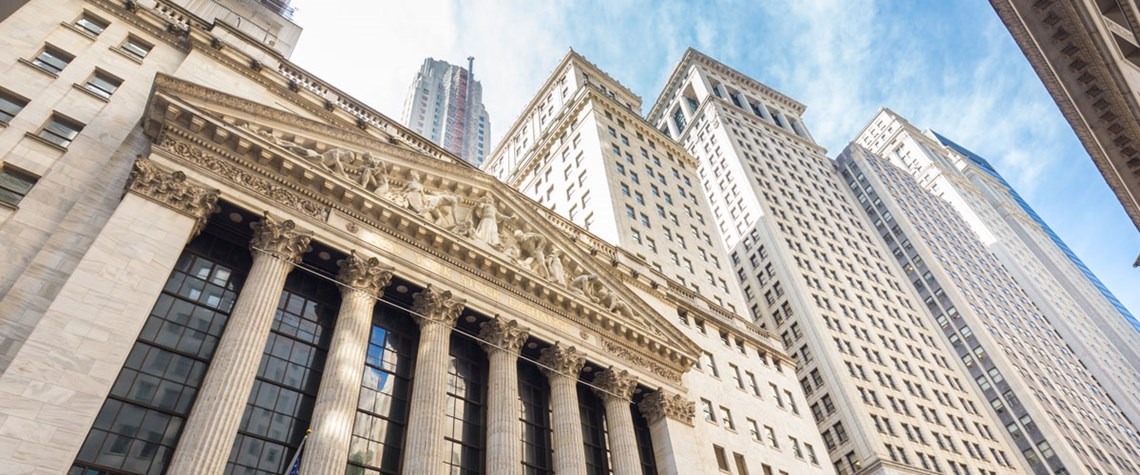Banks Goldman Sachs and Morgan Stanley were the original ‘Wall St refiners’, the term dating back to the late 1980s. It was only after the repeal of the Glass Steagall Act in 1999 that commodity-related businesses within the wider banking community exploded.
For over 20 years prior to the 2008 Great Financial Crisis (GFC), the two pioneers had engaged in physical trading and owned commodity assets and operations. They also developed strong sales franchises that combined derivatives knowledge, investment banking knowhow, and access to the capital markets for their clients. These sales units helped companies hedge their production and consumption of commodities, guaranteeing certainty of cash flows and earnings stability.
The banks became the nexus of the commodity markets. They matched buyers and sellers while providing tailored risk solutions—as opposed to the rigid futures contracts of the day—and flexible finance solutions that allowed corporate clients to prosper through open credit lines while margining investors (or speculators, to use another term) as severely as the exchanges did.
What was not appreciated was how vital this role was for all participants and the health and stability of the commodity markets. The banks made global commodity markets work better.
By 2008, many more banks provided commodity risk management services and financing, and some acquired physical assets to compete across the commodity supply chain. While banks had long financed commodity cargoes, inventories and purchases through lending facilities, they were now trading it all themselves. Moreover, they made good profits and diversified the revenues streams of these banks while serving the most significant parts of the global economy.
And then the 2008 financial crisis happened. Like fixed income, equities and other securities, commodities businesses were subjected to the harshest regulation on Wall Street since the 1930s. With the passing of the Dodd-Frank Wall Street Reform and Consumer Protection Act in July 2010, previously profitable and successful businesses buckled under regulatory, reporting and capital charge burdens. While the associated compliance, reporting and IT burdens were damaging, the new capital regime crippled most of their commodity-related activities.
US banks supervised by that country’s regulators were at a severe commercial disadvantage versus foreign-domiciled banks with representative offices in the US. Those banks were lightly regulated or, in some cases, not at all. However, the foreign banks also had their own domestic regulators and rules, and now lacked the capital to compete abroad. The retreat of the banks from commodity trading began.
Consistent pressure from the Federal Reserve Bank of New York on banks to conform with traditional banking businesses led to regulators assessing Section 4(k) of the Bank Holding Company (BHC) Act of 1956 to explore if physical commodities trading is complementary to their financial activity and does not pose a substantial risk to the safety and soundness of depository institutions or the financial system generally. The pressure came to a head in November 2014, when the main commodity heads of US banks were hauled before Congress for a hearing on the ability of banks to engage in merchant operations.
Shortly after the hearings concluded and before the end of that year, Goldman Sachs sold its London Metals Exchange (LME) storage company Metro to investors the Reuben brothers, while Morgan Stanley divested all physical oil assets to commodity trader CCI. In short, the banks exited the physical commodity markets.
Soaring capital charges were ultimately passed on to clients, making business more challenging for everyone. A prolonged period of poor returns made commodities unattractive as an asset class to the investment community. The repeated boom-and-bust cycles of shale drilling deterred banks and investors from lending more to the sector.
As the banks withdrew further, another market participant emerged as the dominant force, taking the trading role that the banks had played but without taking on the responsibility of those bank sales franchises.
Commodity merchants
The swift ascension of the commodity merchants primarily occurred since they were not subject to the same rules governing the same activities that the banks now were. Near-zero interest rates spurred growth further as they could finance trade, inventories and speculative positions for minimal cost. Profits grew, reputations grew, but as we saw this year when Russia invaded Ukraine, so did risk.
The banks had a near-death experience in 2008 that led to a firmer grasp of all areas of risk management. Commodity merchants, it would appear, do not understand all facets of risk management as well as they thought—liquidity management is becoming their significant operational risk.
Since last autumn, rumours had persisted about merchant traders needing to find extra capital to post variation margins to exchanges where their physical transactions had been hedged.
At the FT Commodities Global Summit in Lausanne in late March, CEOs and CFOs of major commodity trading houses expressed concern about financing trades considering the high prices and market volatility. Before the meeting, the idea that bailouts might be needed was floated for public consumption.
However, the moral hazard associated with such actions is too significant for businesses that exist solely to make money trading. Ironically, most of these companies had record trading years in 2021 and yet simultaneously expressed concerns that they may need a bailout because margining of their speculative trading is becoming too expensive.
Meanwhile, the banking sector is now heavily focused on the upcoming Basel III regulation. Basel regulation is an international regulatory accord started in 2009 that introduced reforms designed to mitigate risk within the global banking sector by requiring banks to maintain specific leverage ratios and keep certain levels of reserve capital on hand.
The Basel III accord will increase the capital requirements for banks from 2pc in Basel II to 4.5pc of common equity as a percentage of the bank's risk-weighted assets. An additional 2.5pc buffer capital requirement brings the total need to 7pc to be Basel compliant. In short: costs are going up again, and significantly.
Commodity exchanges were another winner from the new rules that effectively forced the majority of all commodity trading directly onto exchanges. While they appear to provide market stability, integrity and the safest mechanism for commodity hedgers, the recent explosion in prices across the board and absurd decision-making by the LMEs management in the face of a significant nickel squeeze (causing intraday prices to reach $101,365/t) is making the industry yearn for the calmer days of 2008.
When oil made an all-time high of $147/bl, its market still functioned well. The over-the-counter markets provided by the banks allowed for better market risk mitigation and rarely allowed an individual trader to be cornered or caught short, as so frequently happens on the LME.
A return for banks?
How can we solve some of these financing issues and reduce volatility in the commodity market while simultaneously providing cost-effective risk solutions to corporations to hedge exposure and promote prosperity for all? We must ask ourselves, is it time to consider rolling back some of the Dodd-Frank legislation?
Loosening swaps reporting requirements, increasing speculative position limits and lowering capital charges would allow banks to return to their former role within commodities markets. If not for all banking sectors, even just for their commodities divisions would be a useful step.
Banks had a 30-year track record in helping commodity markets run smoothly. The challenges we face now and for the foreseeable future mean we need all the help we can get, including reviewing how banks can best support commodity markets and their participants.
Would the banks return fully to the commodity markets if this were possible? Goldman Sachs and Australia’s Macquarie remained engaged, albeit only financially. Others such as the commercial banking behemoths Citi, Bank of America and JP Morgan have large client bases that need well-functioning commodity markets—they would welcome these products and their other banking services. Other banks appear to have moved on to a very focused fee model: wealth management and investment banking.
Action must be taken to make commodity markets function better, lower prices and allow hedgers of all kinds to manage their risks. It seems heretical to suggest loosening regulation after 2008. However, we are approaching a new storm of our own making that might lead to problems comparable to those posed by the GFC.
Historically, banks have played positive roles in crises throughout history, and we must look to the better parts of banking during those times to help provide a way today. Inefficient markets drive commodity prices higher. High commodity prices fuel inflation and affect people on the GFC’s scale. The time to act is now.
Kevin O’Reilly is a freelance expert commodity markets risk professional and an independent thought leader in ESG and risk solutions in all commodity-related industries. He most recently served as chief commercial officer at investment firm Global Risk Management and spent over 25 years working on Wall St in energy banking, trading, sales and risk management.









Comments